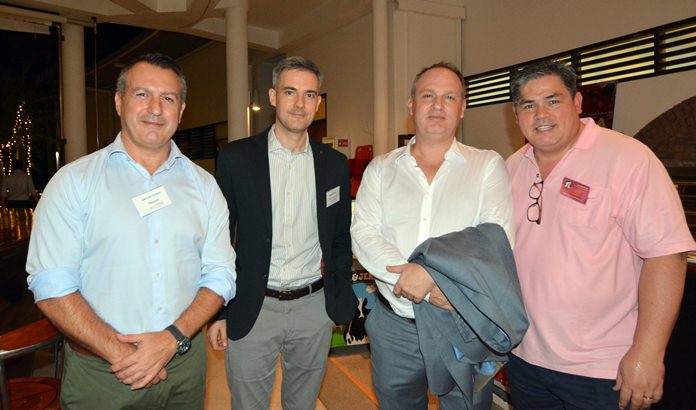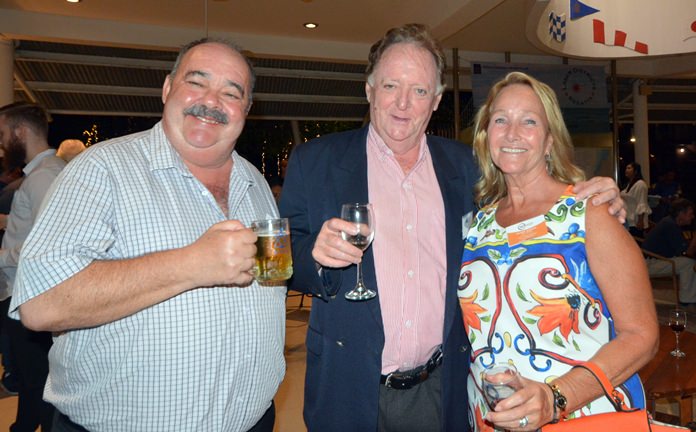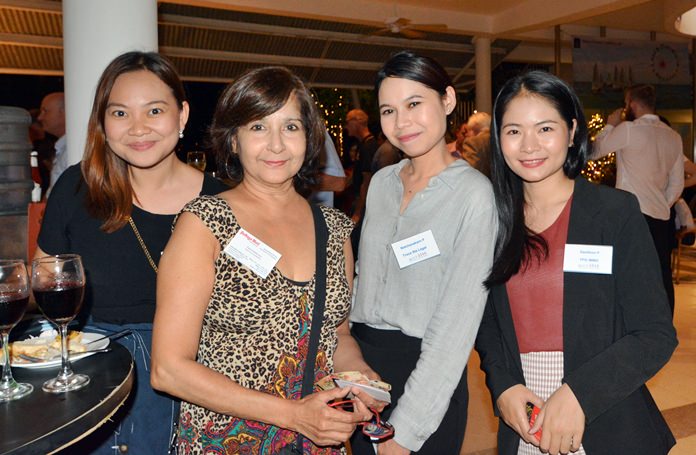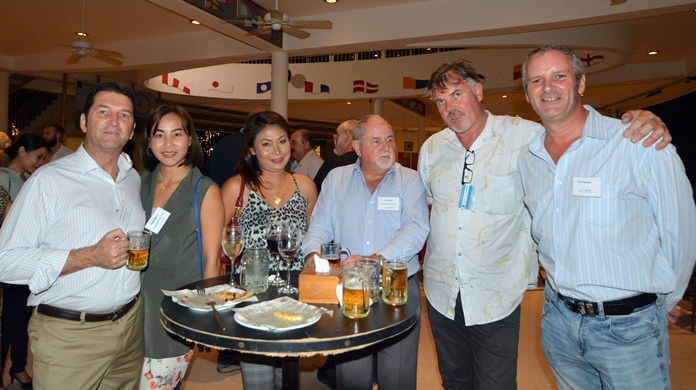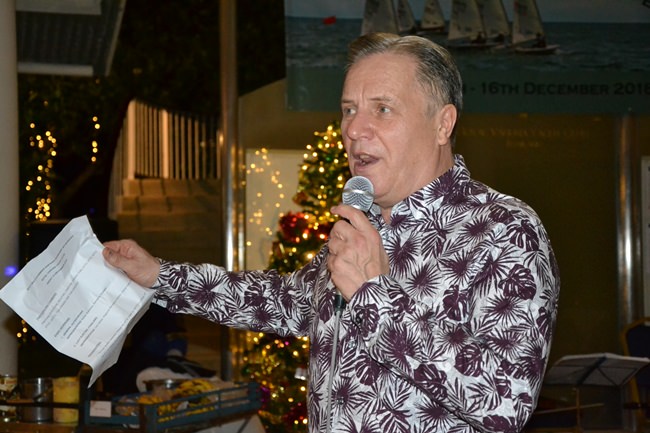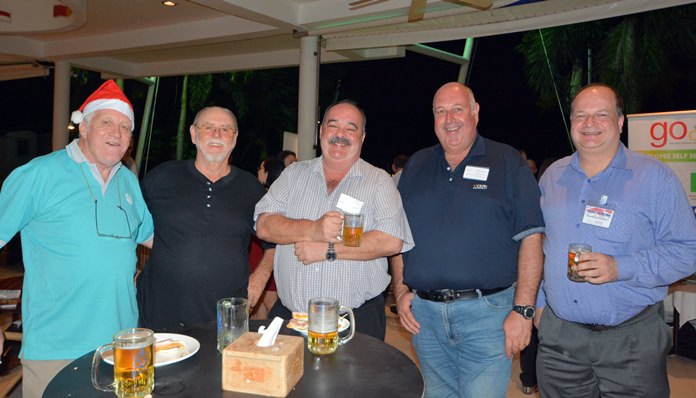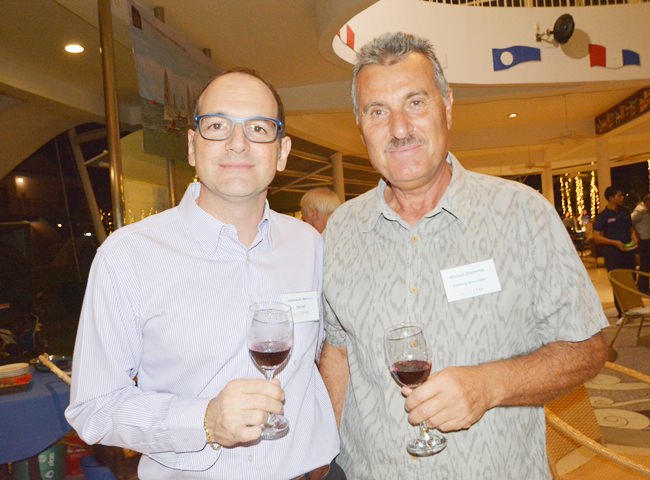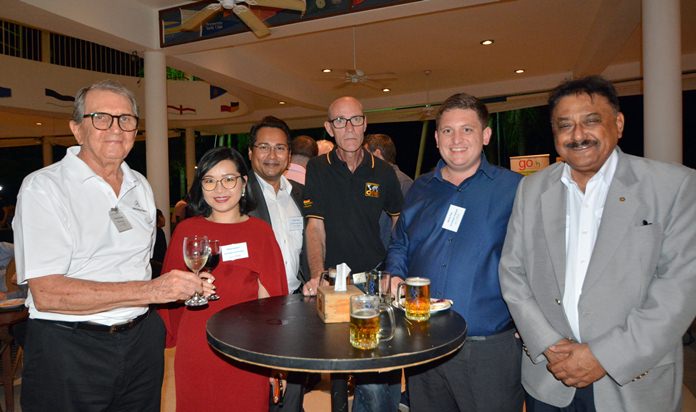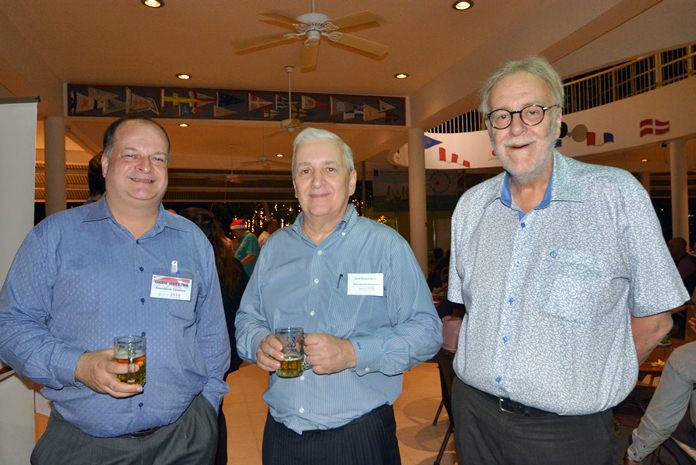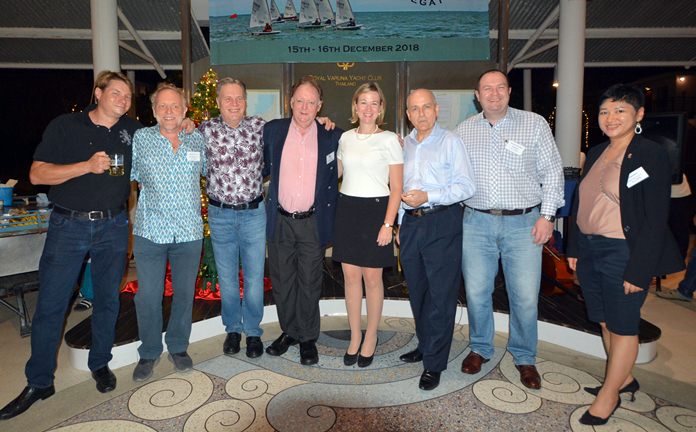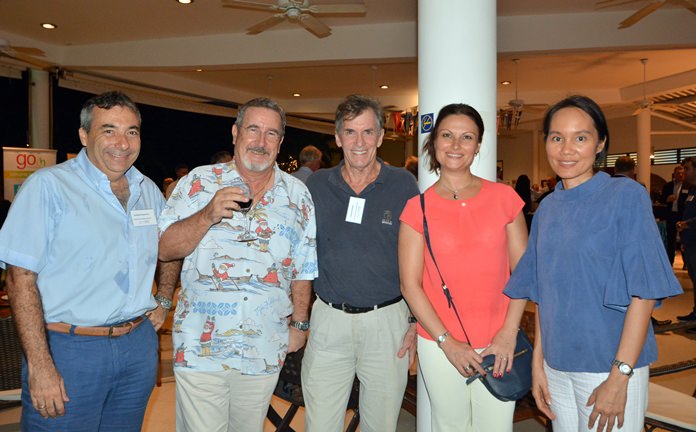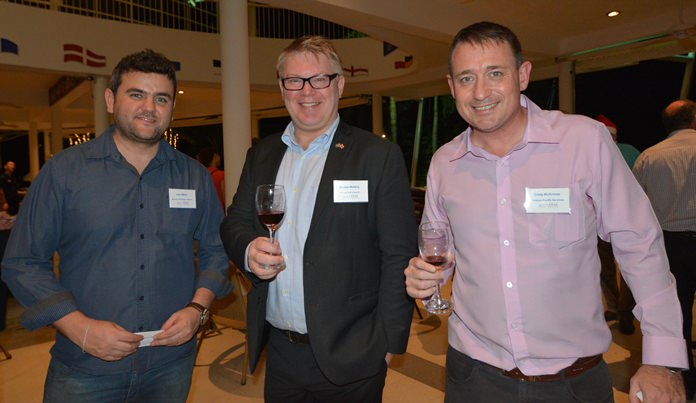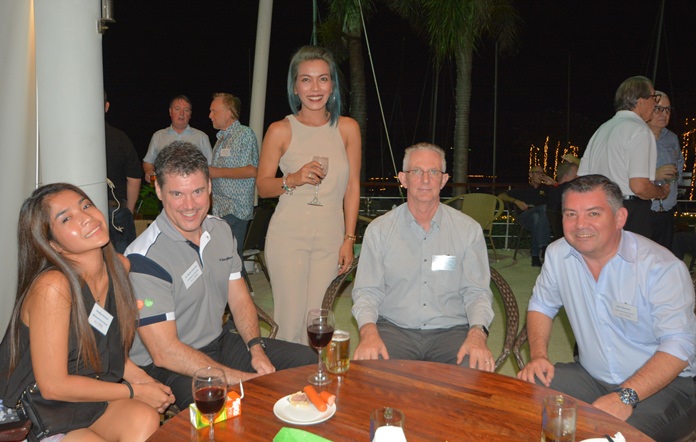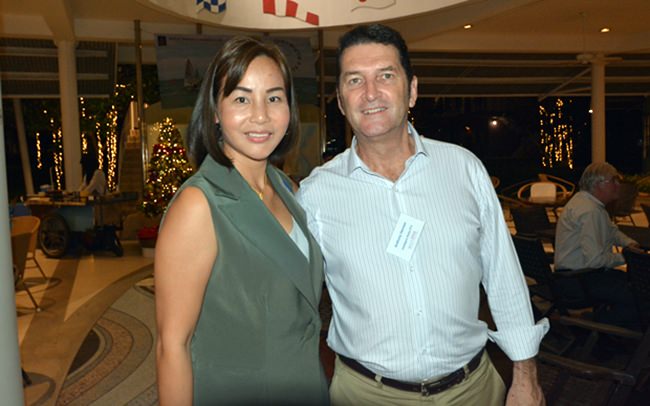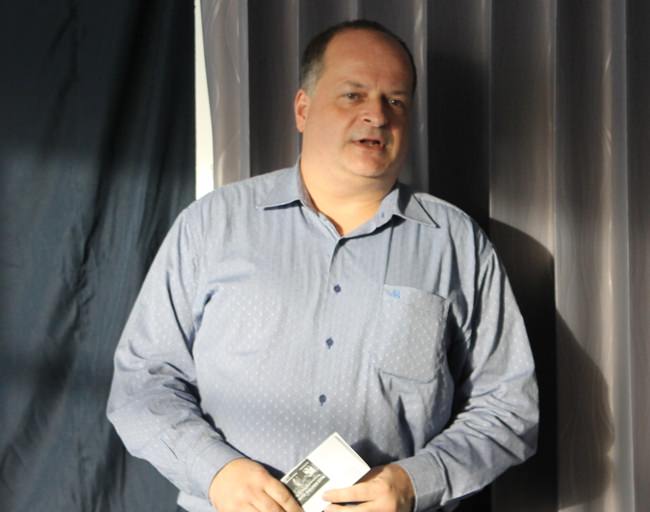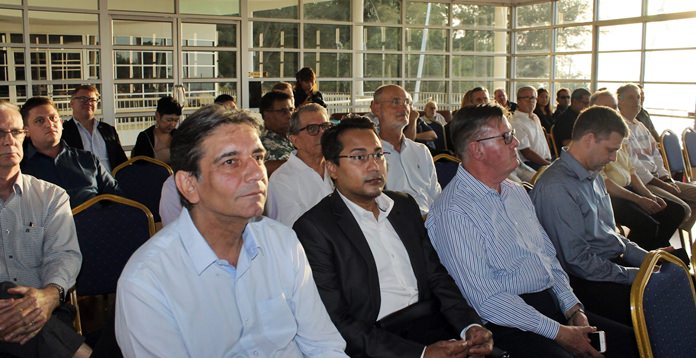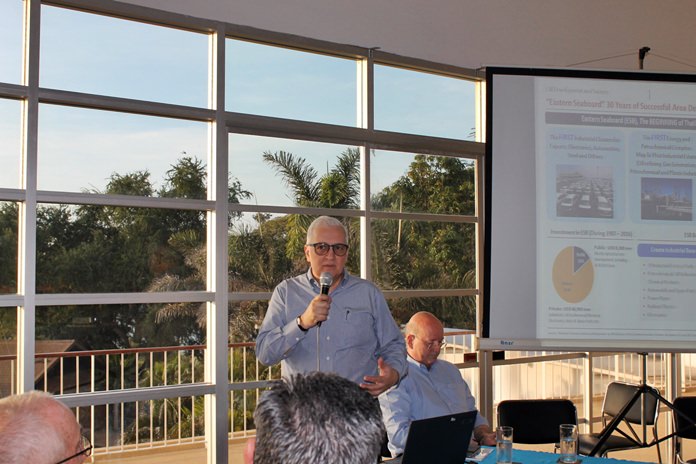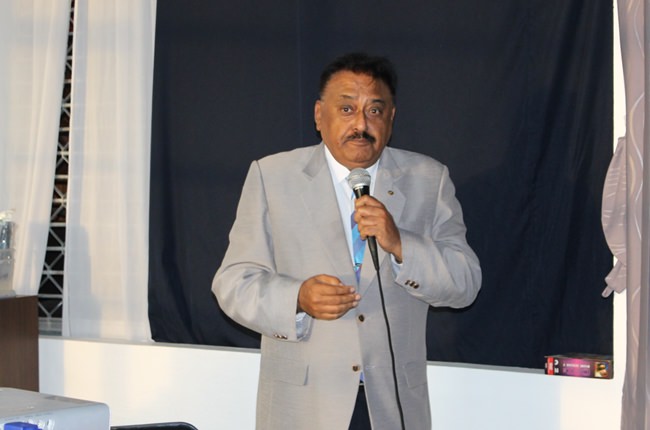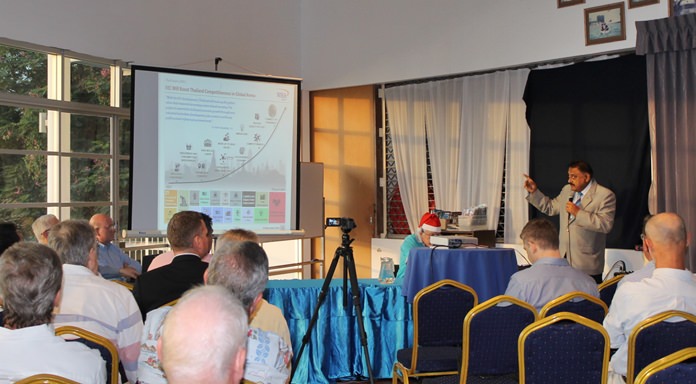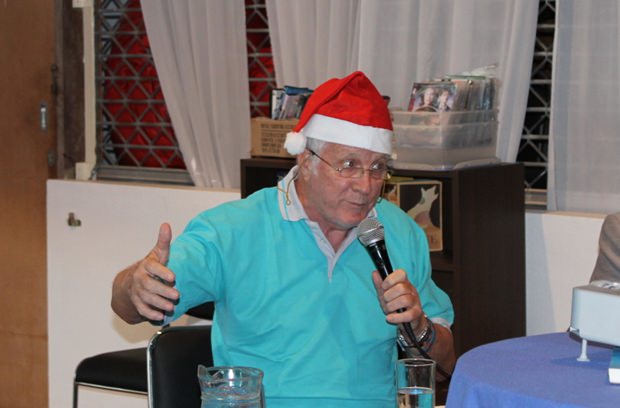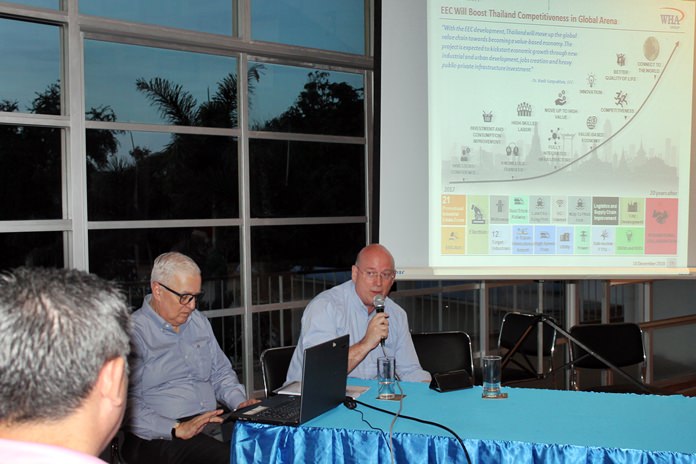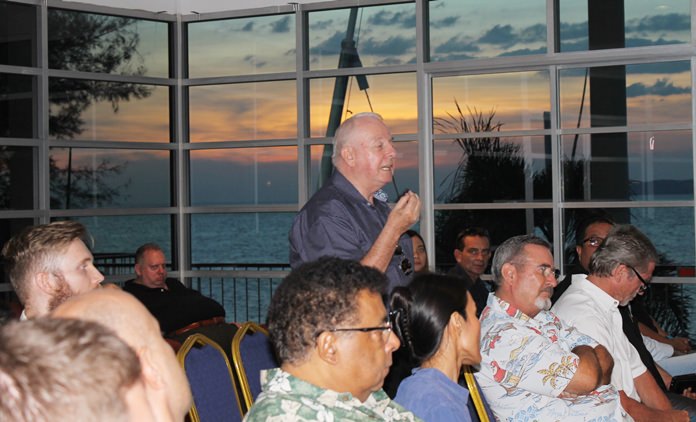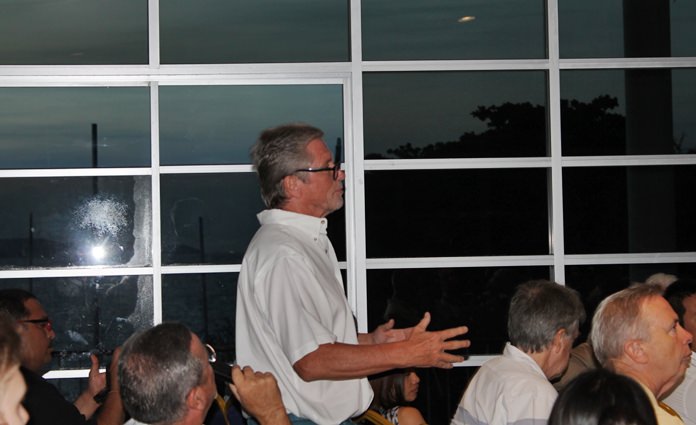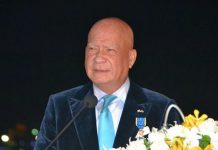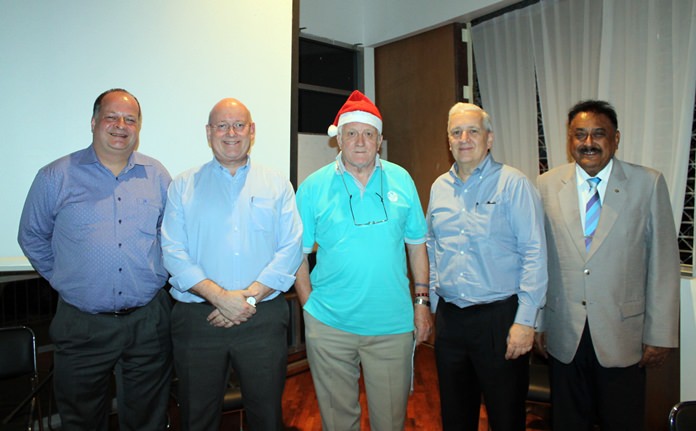
On Friday, 14th December, the British Chamber of Commerce Thailand (BCCT) hosted a multi-chamber networking event at the Royal Varuna Yacht Club. Before the event, the BCCT organized a seminar to discuss the future of the Eastern Seaboard (ESB) and Eastern Economic Corridor (EEC). Greg Watkins, Executive Director of BCCT, was the moderator and he introduced the presenters who were:
* David Nardone – Group Executive, Industrial and International, WHA Industrial Development PLC & Vice President AMCHAM Thailand.
* Graham Macdonald MBE – Director, Macallan Insurance Broker Co Ltd; Senior Adviser PKF; Honorary Adviser to: BCCT, SATCC, South African embassy, Rugby School Thailand, English for All.
* Peter Malhotra – Managing Director, Pattaya Mail Publishing Co., Ltd.
* Jim Howard – past-Managing Director, Katoen Natie Sembcorp, EOC Polymers & SGS.
The aforementioned were all on the original BCCT ESB Group which was founded in 1998 and Graham Macdonald was the first Chairman. Needless to say, all of them have seen many changes over the last 20 years.
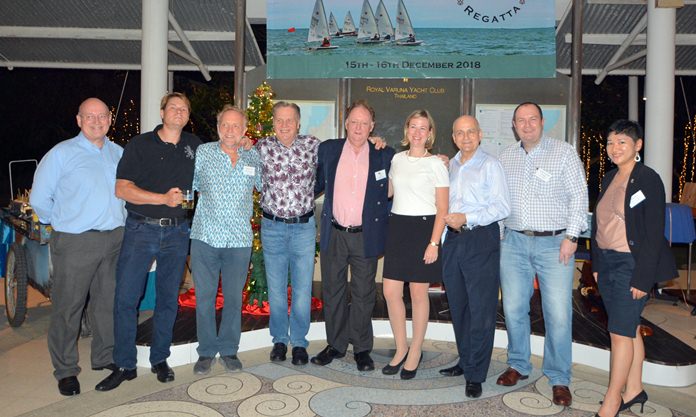
David Nardone started the evening off with a presentation on how the ESB had grown over the last couple of decades and how he expected this to continue. David showed statistics from the automotive industry which showed just how far the ESB has come since the early 1990s. The ESB was responsible for the first industrial clusters for certain exports, e.g. automotive, electronics and steel plus many others. It was also the first place in Thailand to integrate all the infrastructure for many different kinds of industry as well as launching the region’s inaugural energy and petro-chemical complex at Maptaphut. He also pointed out that private investment was more than five times that of the government but was the first to point out how vital the infrastructure was to the existence of the ESB and thereby the EEC.
Reverting to the automotive industry David showed how almost continuous growth has taken it from producing just over 300,000 cars in 1999 to almost 2 million last year. This then showed how the ESB and EEC could offer a first class destination which also provided an experienced, skilled workforce to potential investors – especially when you throw in the special incentives offered for setting something up within the EEC.
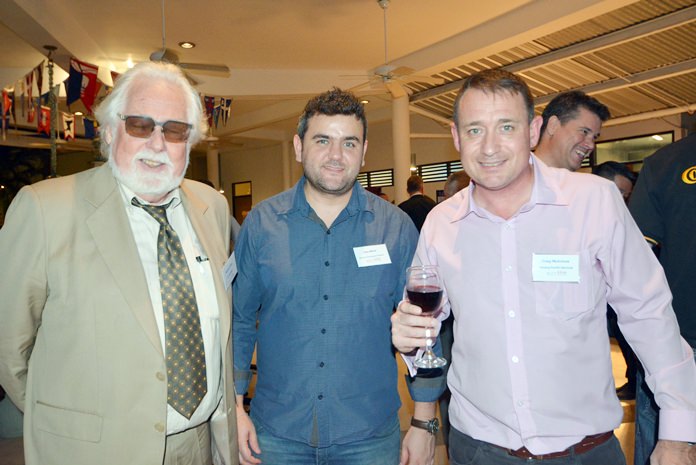
There are 12 targeted industries for the EEC but anything will be considered. The twelve are: next generation automotive, smart electronics, medical & wellness tourism, agriculture &biotechnology, food for the future, robotics & mechatronics, aviation, logistics, biofuels & biochemicals, digital. Also, national defence and human resource & educational development will receive special consideration.
Once everything is in place, the recent quote from Dr. Kanit Sangsubhan, Secretary General Eastern Economic Corridor Office of Thailand was shown as it summed up the whole project, “With the EEC development, Thailand will move up the global value chain towards becoming a value-based economy. The project is expected to kick start economic growth through new industrial and urban development, jobs creation and heavy public-private infrastructure investment.”
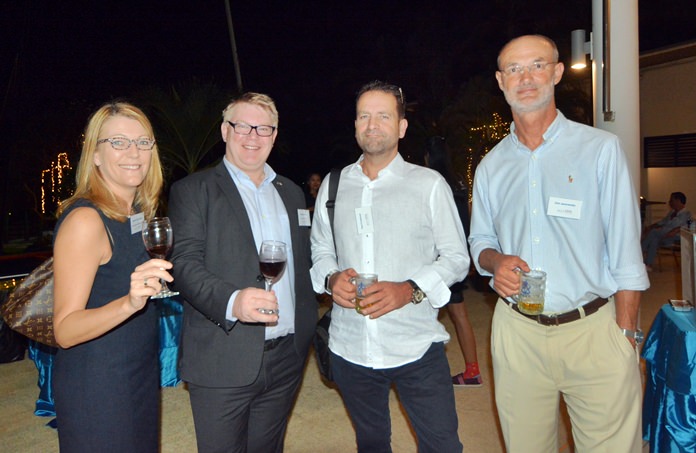
David then handed over to Peter Malhotra who spoke about the human side. He reminded people that Pattaya was nothing more than a little fishing village fifty years ago and that Second Road was just a dirt track. He has seen the development grow exponentially since then – some of it good and some of it not. However, this was definitely the place to be in Thailand if you wanted to continue with progress. Nonetheless, it was vital the human element was considered by those who were planning the industrial and urban growth of the region. The educational system is old fashioned and must be restructured. He stressed the importance of vocational training which will give opportunities for young people to get better paid high skilled jobs. “The EEC is great for business and we are looking forward to the day when all these wonderful plans become a reality. But I do encourage business enterprises to invest in vocational training centres too. It will not only be good for your business, but you will also ensure that the next generation of Thailand’s work force will be as knowledgeable and skilled, comparable to the best in the world.”
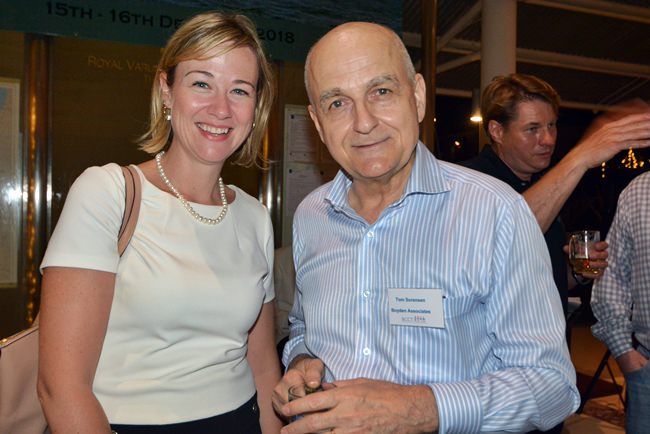
Jim Howard concurred with Peter and added that the planning and creation should be monitored at all times. Too often, elsewhere in South East Asia, greed has taken over and promises broken – to the detriment of all concerned but especially those whose lives and hopes had been dashed.
Graham Macdonald summed up by agreeing with everything that his fellow panellists had said. He said that he believed a lot of the basic infrastructure was already in place but more was needed, particularly when such projects as the expansion of U-Tapao and the Sattahip Commercial port were so close to being awarded. He also worried about where all the skilled labour was going to come from as unemployment in Thailand is hardly at an all-time high.
The evening ended with a Q & A session and a vote of thanks being given by Greg Watkins.
